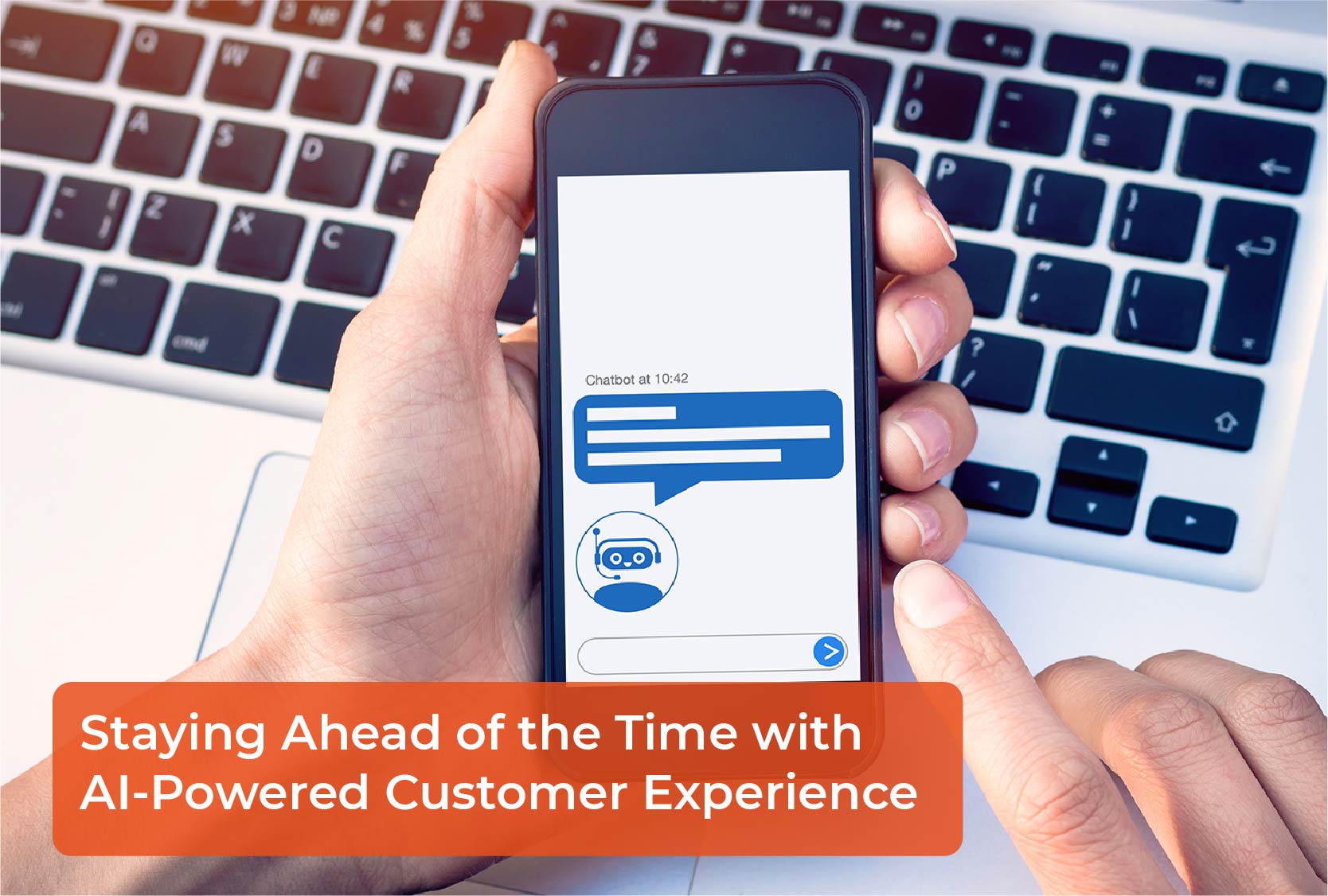If you provide your consumers with a terrific experience, they’ll spend more money with you, stay loyal, and tell their friends about it. And that is the ultimate achievement for all organizations globally. However, not a lot of organizations can ace this game. Call it an experience disconnect: businesses boast the newest technology or stylish designs, but they haven’t given much thought to—or money—to—the most important facets of the consumer experience.
What actually constitutes a positive experience? It’s simply the four super elements of speed, practicality, compatibility, and friendliness. Additionally, add a human touch by enhancing technology’s human-like qualities and equipping staff with the tools they need to deliver superior client experiences.
Let’s now deep-dive into the strategies to improve your customer experience strategy with the aid of emerging technologies like Conversational RPA, Conversational IT Process Automation, intelligent document processing, etc
- Establish feedback loops
Feedback from customers can help you understand how customers’ expectations may vary over time as your sector evolves. Additionally, it might help you identify trouble spots for clients and validate successful strategies. Recognizing the criticism and making an effort to act on it is crucial. It’s crucial to establish a sufficiently-trained feedback loop with clients and take their suggestions into consideration. AI-powered software can flawlessly manage recording customer feedback across their communication channels. This fosters confidence and guarantees that it is more than just talk. Additionally, experts advise establishing an internal feedback loop for workers. Agents can assist in gathering client feedback and can offer insight into what makes it difficult for them to provide excellent service, such as policies or procedures that don’t meet the demands of customers or create unwanted friction between departments. - Make a content management plan.
Many a time, customers would rather handle problems on their own than contacting a live representative. Data-driven content can help them resolve the problems themselves. The majority of the time, it comes in the form of AI-powered chatbots or assistance articles that rapidly send clients in the proper direction. It is essential to make sure that your material is correct and current, as a terrible experience might be caused by a lousy article or not sufficiently inputted chatbot. - Create a seamless omnichannel experience.
It is not enough to simply meet customers where they are when you create an omnichannel CX strategy. By offering your customers a consistent communications journey, or omnichannel experience, you go a step further and ensure that their conversation history and context follow them from channel to channel. Context is essential for providing a positive experience across channels, including information on who your customer is, what outbound emails they have opened, what’s in their shopping cart, and what they have previously discussed with you. And, AI-powered tools ensure that none of these should go unnoticed or not catered to! - Decoding the customer empowerment game.
According to Gartner, by 2022, 70% of customer contacts will involve cutting-edge technology like chatbots, machine learning software, or mobile messaging. For rapid, repetitive activities, AI-powered chatbots and virtual customer agents are useful. But when they reach their limits on offering capable customer support, humans need to be right there to help their customers. - Utilize analytics and data.
Numerous trends, including the effectiveness of the support organization, general satisfaction with the contacts, behavioral trends among your customers, and many more, can be deduced from the data about your customers and your support agents. Understanding what the data is saying is the first step in improving procedures with your customers in mind. Data collection processes can be simplified by employing automation.
Now that we have listed the must-do, let’s discuss the consequences of the same:
-
- Your clients have needs. Not at all like you imagine. Companies have opportunities to improve how customers interact with, embrace, and spend time with their brand by leveraging technologies and advancements that promote speed, convenience, friendliness, and knowledge—core consumer needs. With the power of AI, businesses can unlock a new era of success.
- Customers bring in money. The experience is driven by the staff. Boost staff empowerment and decrease consumer friction to increase customer satisfaction. This calls for innovative working methods, an emphasis on the employee experience, and an in-depth understanding of the interactions between people and machines. Bots can be messiahs here, relieving the employees from the burden of multi-tasking and hectic chores.
- Human-bot teamwork should be on point. Customer experience problems cannot be resolved by technology solely. Only a facilitator really can resolve them. So, set new priorities. Stronger, more intelligent, and more original ideas result from great employee experiences. These will fuel future sales and exemplary customer service in the long run.
To conclude, there is no one solution that works for everyone, though. Big or small players in the industry can deliver a fantastic customer experience by simply operating responsibly and in a way that benefits their clients. Input is essential for this; if not via customer satisfaction surveys, then at least by promptly identifying and acting upon unfavorable feedback. To stay ahead of the curve, technology can help companies with consumer journey analytics and multichannel distribution.
Curious about how you can step up in your CX game with Conversational AI and Automation, reach out to AutomationEdge today for expert advice!
